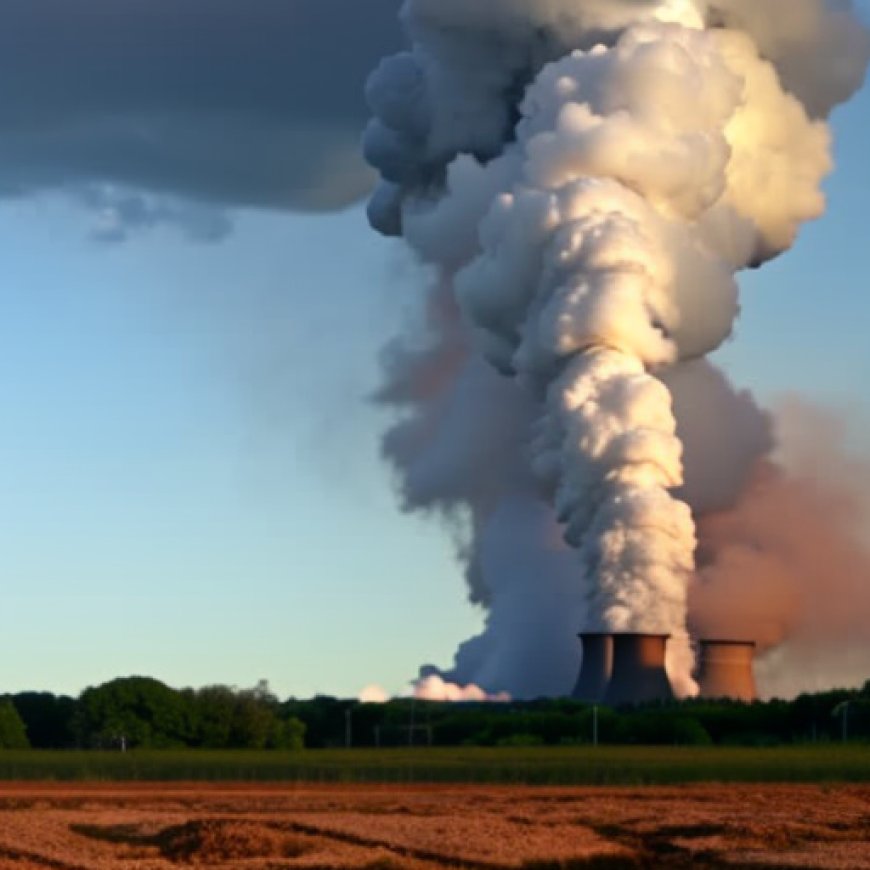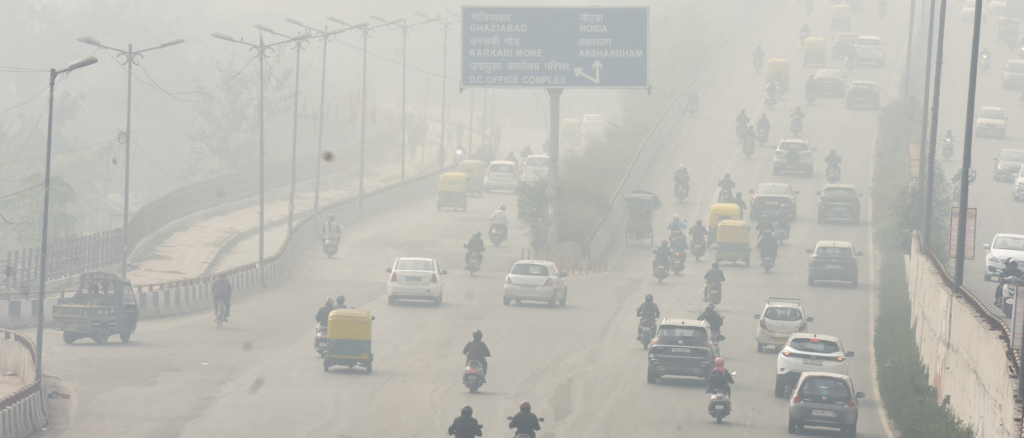global-heatwaves-are-worsening-air-pollution-underscoring-the-urgent-need-to-phase-out-fossil-fuels
global-heatwaves-are-worsening-air-pollution-underscoring-the ... Amnesty International


Increased Heatwaves Threaten Air Quality and Human Rights

Reacting to a report today from the World Meteorological Organization, which shows that the increased frequency and intensity of heatwaves are significantly lowering air quality worldwide, threatening people’s health and their right to a clean, healthy and sustainable environment, Ann Harrison, Amnesty International’s Climate Advisor, said:
Climate Change and Air Quality
“Climate change is increasing the intensity and frequency of heatwaves, and extreme heat, compounded by wildfires and desert dust, is measurably damaging air quality on a vast scale and threatening people’s human right to health and to a healthy environment.
Ann Harrison, Amnesty International’s Climate Advisor
“Climate change and air quality are inextricably linked. The same pollutants that cause climate change harm air quality, endangering human health, damaging ecosystems, lowering agricultural productivity and putting lives at risk on a daily basis.
“It is especially worrying that the data underlying this report pertains to last year and has yet to take account of the enormous quantities of pollutants generated by record high global temperatures experienced in the last three months, or the particulate matter generated by huge wildfires in Canada and Europe, many of which are still burning.
“This underscores the need for rapid, effective and participatory climate action, including a fast and fair phase-out of fossil fuels through a just energy transition that fully respects and protects human rights to ensure enjoyment of the rights to life, health, water and sanitation, among others.
This underscores the need for rapid, effective and participatory climate action, including a fast and fair phase-out of fossil fuels through a just energy transition.
Ann Harrison
“If we want to avert an even worse climate disaster, the time for meaningful action is now. We cannot rely on unproven carbon capture or removal and storage technologies as these will only discourage the fossil fuel phase-out. Nor are carbon credit markets, which have been shown to be open to manipulation and abuse by fossil fuel polluters resistant to the just transition we need, the answer to this crisis.”
“Countries must act to safeguard public health and human rights. Those with the biggest responsibility for historical emissions must ensure their existing climate finance commitments are met to help protect the rights of the Indigenous peoples and marginalized communities most vulnerable to climate change.”
Background
Amnesty International has highlighted the health impacts of climate change, which are worse for marginalized individuals and groups such as refugees and migrants. It has also documented the impact of heatwaves on human rights in vulnerable communities.
Amnesty International is part of a civil society and Indigenous peoples’ coalition that won the prestigious United Nations Human Rights Prize for successfully campaigning to have everyone’s right to a clean, healthy and sustainable environment universally recognized.
The World Meteorological Organization is the United Nation’s agency responsible for atmospheric science and climatology, hydrology and geophysics. According to data released today by the EU-funded Copernicus Climate Change Service, June, July and August 2023 was the hottest three month period ever recorded.
SDGs, Targets, and Indicators
-
SDG 3: Good Health and Well-being
- Target 3.9: By 2030, substantially reduce the number of deaths and illnesses from hazardous chemicals and air, water, and soil pollution and contamination.
- Indicator: Air quality index and levels of pollutants.
-
SDG 6: Clean Water and Sanitation
- Target 6.3: By 2030, improve water quality by reducing pollution, eliminating dumping, and minimizing release of hazardous chemicals and materials.
- Indicator: Levels of pollutants in water sources.
-
SDG 7: Affordable and Clean Energy
- Target 7.2: By 2030, increase substantially the share of renewable energy in the global energy mix.
- Indicator: Percentage of renewable energy sources in the global energy mix.
-
SDG 13: Climate Action
- Target 13.1: Strengthen resilience and adaptive capacity to climate-related hazards and natural disasters in all countries.
- Indicator: Number of deaths, injuries, and economic losses caused by climate-related hazards.
- Target 13.2: Integrate climate change measures into national policies, strategies, and planning.
- Indicator: Existence of national policies and plans addressing climate change.
-
SDG 15: Life on Land
- Target 15.1: By 2020, ensure the conservation, restoration, and sustainable use of terrestrial and inland freshwater ecosystems and their services.
- Indicator: Proportion of important sites for terrestrial and freshwater biodiversity that are covered by protected areas.
Table: SDGs, Targets, and Indicators
| SDGs | Targets | Indicators |
|---|---|---|
| SDG 3: Good Health and Well-being | Target 3.9: By 2030, substantially reduce the number of deaths and illnesses from hazardous chemicals and air, water, and soil pollution and contamination. | Air quality index and levels of pollutants. |
| SDG 6: Clean Water and Sanitation | Target 6.3: By 2030, improve water quality by reducing pollution, eliminating dumping, and minimizing release of hazardous chemicals and materials. | Levels of pollutants in water sources. |
| SDG 7: Affordable and Clean Energy | Target 7.2: By 2030, increase substantially the share of renewable energy in the global energy mix. | Percentage of renewable energy sources in the global energy mix. |
| SDG 13: Climate Action | Target 13.1: Strengthen resilience and adaptive capacity to climate-related hazards and natural disasters in all countries. | Number of deaths, injuries, and economic losses caused by climate-related hazards. |
| SDG 13: Climate Action | Target 13.2: Integrate climate change measures into national policies, strategies, and planning. | Existence of national policies and plans addressing climate change. |
| SDG 15: Life on Land | Target 15.1: By 2020, ensure the conservation, restoration, and sustainable use of terrestrial and inland freshwater ecosystems and their services. | Proportion of important sites for terrestrial and freshwater biodiversity that are covered by protected areas. |
Analysis
1. Which SDGs are addressed or connected to the issues highlighted in the article?
The issues highlighted in the article are connected to the following SDGs:
– SDG 3: Good Health and Well-being
– SDG 6: Clean Water and Sanitation
– SDG 7: Affordable and Clean Energy
– SDG 13: Climate Action
– SDG 15: Life on Land
2. What specific targets under those SDGs can be identified based on the article’s content?
Based on the article’s content, the following specific targets can be identified:
– Target 3.9: By 2030, substantially reduce the number of deaths and illnesses from hazardous chemicals and air, water, and soil pollution and contamination.
– Target 6.3: By 2030, improve water quality by reducing pollution, eliminating dumping, and minimizing release of hazardous chemicals and materials.
– Target 7.2: By 2030, increase substantially the share of renewable energy in the global energy mix.
– Target 13.1: Strengthen resilience and adaptive capacity to climate-related hazards and natural disasters in all countries.
– Target 13.2: Integrate climate change measures into national policies, strategies, and planning.
– Target 15.1: By 2020, ensure the conservation, restoration, and sustainable use of terrestrial and inland freshwater ecosystems and their services.
3. Are there any indicators mentioned or implied in the article that can be used to measure progress towards the identified targets?
Yes, there are indicators mentioned or implied in the article that can be used to measure progress towards the identified targets:
– Air quality index and levels of pollutants can be used to measure progress towards Target 3.9.
– Levels of pollutants in water sources can be used to measure progress towards Target 6.3.
– Percentage of renewable energy sources in the global energy mix can be used to measure progress towards Target 7.2.
– Number of deaths, injuries, and economic losses caused by climate-related hazards can be used to measure progress towards Target 13.1.
– Existence of national policies and plans addressing climate change can be used to measure progress towards Target 13.2.
– Proportion of important sites for terrestrial
Behold! This splendid article springs forth from the wellspring of knowledge, shaped by a wondrous proprietary AI technology that delved into a vast ocean of data, illuminating the path towards the Sustainable Development Goals. Remember that all rights are reserved by SDG Investors LLC, empowering us to champion progress together.
Source: amnesty.org

Join us, as fellow seekers of change, on a transformative journey at https://sdgtalks.ai/welcome, where you can become a member and actively contribute to shaping a brighter future.







